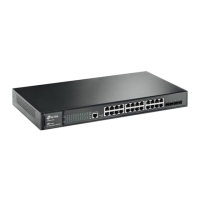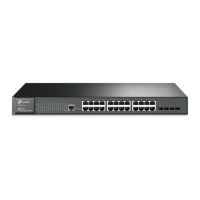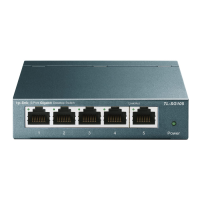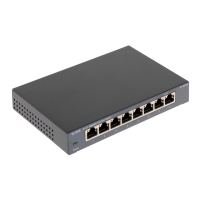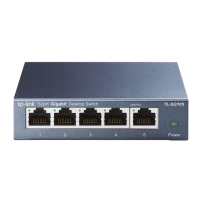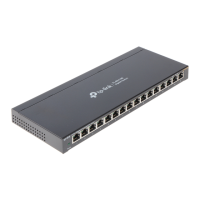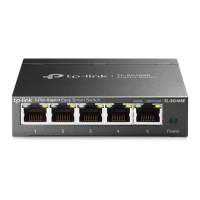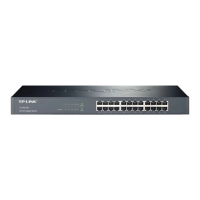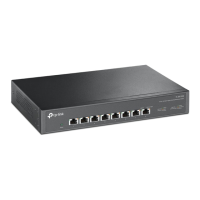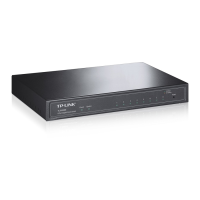Chapter 16 IEEE 802.1X Commands
IEEE 802.1X function is to provide an access control for LAN ports via the authentication. An
802.1X system include three entities: supplicant, authenticator and authentication server.
Supplicant: the device that requests access to the LAN.
Authentication server: performs the actual authentication of the supplicant. It validates the
identity of the supplicant and notifies the authenticator whether or not the supplicant is
authorized to access the LAN.
Authenticator: controls the physical access to the network based on the authentication
status of the supplicant. It is usually an 802.1X-supported network device, such as this
TP-Link switch. It acts as an intermediary (proxy) between the supplicant and the
authentication server, requesting identity information from the supplicant, verifying that
information with the authentication server, and relaying a response to the supplicant.
This chapter handles with the authentication process between the supplicant and the switch.
To realize the authentication and accounting function, you should also enbable the AAA
function and configure the RADIUS server. Go to Chapter 44 AAA Commands
for more details.
16.1 dot1x system-auth-control
Description
The dot1x system-auth-control command is used to enable the IEEE 802.1X
function globally. To disable the IEEE 802.1X function, please use no dot1x
system-auth-control command.
Syntax
dot1x system-auth-control
no dot1x system-auth-control
Command Mode
Global Configuration Mode
Privilege Requirement
Only Admin, Operator and Power User level users have access to these
commands.
Example
Enable the IEEE 802.1X function:
T2500G-10TS(config)#dot1x system-auth-control
114
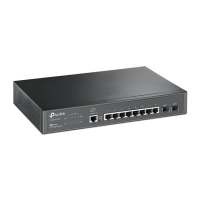
